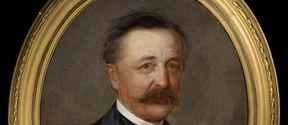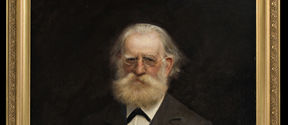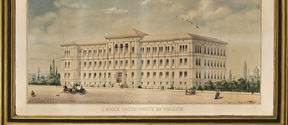Another teacher to be invited to Helsinki was Johan Conrad Dierchs Reuter, who had completed a degree in surveying in 1852. In the late 1850s, Reuter completed an engineer's degree in the Hanover Polytechnic School and rounded out his studies in 1861 in Karlsruhe. His teaching duties in Helsinki began in the autumn term of the same year, covering descriptive and practical geometry.
In 1862 in Hanover, Manufactory Board chair Julius Mickwitz agreed with architect Ludwig Wilhelm Bähr that the latter would come to Helsinki. Bähr would be responsible for architectural education in Finland. However, he never settled into Helsinki or learned Swedish, as the other German teachers did. Bähr died in January 1869 of typhoid fever at the age of 38.
A new generation of teachers
The European shortage of technology teachers eased in the end of the 1870s, when the period of institutionalisation ended in schools and the first students of college-level institutions graduated in the continent's periphery. In Helsinki, too, vacant teachers' positions were being taken up by young experts who were educated in Finland. German teachers were still needed, however, especially in the field of mechanical engineering.
Max Seiling is one of the most well-known German teachers in the Polytechnic Institute, responsible for the subjects of mechanical technology and mechanical engineering during 1879–1897. A native of Bavaria, Seiling had completed his engineer's studies in Münich in the mid 1870s and served as an assistant at the Münich Polytechnicum. He came to Helsinki at the beginning of the Polytechnic Insitute's curriculum in 1879. In addition to engineering, Seiling was interested in spiritual matters and humanist sciences. He would later become known primarily for his theosophist writings. During the 1890s, Seiling's home was the setting for general spiritual sessions attended by the refined elements of society.
Engineer training in Helsinki depended on the work of German teachers until the beginning of the Great War. The issue came to a head when the Polytechnic Institute became the Technical University of Finland in 1908 and new rules allowed for the hiring of six professors for the Department of Mechanical Engineering. Karl Axel Mauritz Ahlfors was appointed to the professorship in turbine engineering, but despite three advertisements, no qualified professor could not be found in Finland to fill the other vacancy.
With the other professorship still vacant, the senate granted permission for inviting Dr.-Eng. Ernst Tuckermann of Hamburg to fill the position for five years. Tuckermann's position was extended at the end of the five-year period, but he had to leave the country in 1914 due to the outbreak of war in Europe and would be replaced by engineer Harald Kyrklund. Tuckermann was the last of the German teachers in Helsinki.
The shortage in mechanical technology teachers was so severe that not even assistants could be found despite the offered salary being elevated to 1 400 marks per year.


